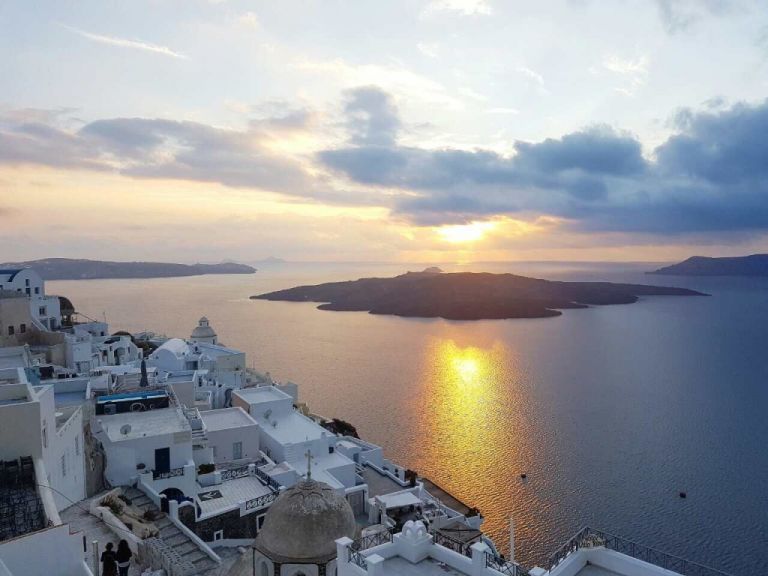Cycladic architecture is well-known for its uniqueness and beauty. The quick development of tourist over current years has extended its reputation well beyond the borders of Greece. When you go to a Cycladic town or town for the first time, you may have the sensation that you are inside an enchanting stage set.

The early Cycladic contractors worked in the very same basic yet bold style that differentiated the artists who created Cycladic idols some 5,000 years ago. With the authentic and untainted instinct of folk artists, these artisans constructed buildings that were adjusted not just to the everyday requirements of the inhabitants, but also to the charm and grace of the Cycladic landscape.
One hardly ever encounters public squares in Cycladic towns. Public spaces in settlements are, as a rule, rather little. The typical location is typically the street, with its exceptionally well-balanced building exteriors.
The street is characteristically paved with whitewash-outlined polygonal or rectangle-shaped flagstones. The pattern of the flagstones is generally adjusted to fit along the outsides of the structures, which are of 2 main designs: narrow-facade ("stenometopo") and broad-facade ("evrymetopo"). Buildings in the exact same cluster or on the very same block are most likely to be in the exact same style, with similar functions. A row of narrow-facade houses will have roughly the exact same measurements and the same style. Your homes normally have two storeys, with an outside staircase that enables separate access to the upper floor from the street.
The outdoors staircase exists regardless of whether the house is used as a single-family dwelling or more different households individually own the ground floor and upper floor.
Separate ownership of specific floors is a popular custom in the Cyclades, dating centuries back. It apparently started because of the lack of space within the fortified settlements that were built in the latter part of the 14th century when the islands initially ended up being settlements. Later, however, separate-storey ownership continued even after the pirate attacks had eased off (mostly following the Battle of Lepanto in 1571), with the settlements then able to spread beyond the walls. Although the primary reason for this is that it served the institution of the dowry, separate-storey ownership pleased other requirements too, In Mykonos, for example, peasants who went to Hora (the Town) to offer their items and do their marketing desired storage spaces and basic shelter. So, they acquired these ground floors from the residents.
The outsides of Cycladic buildings are simple and unembellished, whitewashed, with just a couple of windows and a particular type of roofing system, which comes in 3 variations: vaulted, inclined, or pitched. For the most part, Cycladic homes look like linked stark-white cubes.
Perched on cliff-sides, with an economy of space ensured by native ingenuity, these single or two-storeyed homes mix with church facades, fountains, windmills (where they exist) and dovecotes to compose pictures seen nowhere else worldwide.
Buildings that form a compact mass, irregularly lined up homes, a financial use of curves, and walls that subtly incline out towards the ground to provide the impression that the structure is growing out of the island's stark rocky ground, flagstone stairs rimmed in white to reduce their weight. When you add the painted doors (typically, the cobalt blue of the sea), windows and balconies, which contrast the plain white houses, you have the complete photo of Cycladic architecture.

But this is just the general image. Each island has its own unique attributes, identified by its history and topography, along with by how the local materials have actually been made use of.
The interior of your houses is also similar, with only small variations from island to island. The inside space is divided into 2 unequal sections by a sort of platform, 1-2 meters high and as much as 3 meters large, extending either the length or width of the house. This platform is called, at the same time, "krevatos" (bed), "kraatos" or "couches" (sofa) depending upon the place. The home furnishings, which are impressive for their aesthetics improvement and effectiveness, remain in total harmony with the decoration and architecture of your home. The interior design includes little cabinets, the "stamnos" (water jug) stand, trunks to keep clothes, closets, icon stands, wooden-carved chests, in addition to a variety of furniture constructed into the walls.
This is frequently combined with pebble-paved front lawns (especially on Milos and Paros, as well as other islands), which add specific grace to the always unified but otherwise stark buildings of Aegean island vernacular architecture.
For more details: Santorini Secret
test